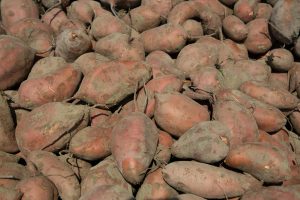
Gypsum for Root Crops: Preventing Cracking and Improving Shape
Root crops are among the most reliable and versatile vegetables grown in fall gardens. Carrots, beets, radishes, potatoes, and turnips are staples for both commercial

As summer winds down, your lawn is gearing up for one of the most critical transitions of the year. How you feed your turf in the final stretch of summer can determine how well it handles cooler temperatures, resists disease, and bounces back in spring.
This guide offers key fertilizer strategies to help you shift your lawn care routine from high summer maintenance to early fall preparation—complete with product recommendations from Supply Solutions LLC to get the timing and nutrients just right.
The end of summer may seem like a winding-down period, but your lawn is still actively growing below the surface:
Proper fertilization at this stage focuses on root health, energy storage, and turf density—not just top growth.
1. 10-10-10 Liquid Fertilizer with Micronutrients
2. Ammonium Sulfate 21-0-0-24S
| Month | Application Type | Recommended Product |
|---|---|---|
| August | Light feeding post-heat | 10-10-10 Liquid, Calcium Nitrate |
| September | Root development boost | Ammonium Sulfate, 10-10-10 |
| October | Final prep before dormancy | Balanced granular or slow-release |
Late summer is your window of opportunity to give your lawn a nutritional head start for fall and winter. A well-planned fertilizer program—using products like 10-10-10 Liquid, Ammonium Sulfate, and Calcium Nitrate—ensures that your turf has the strength to endure and the reserves to regrow.
Need help choosing the best fertilizer strategy for your region and turf type?
Call 503-451-1622
Email sales@mysolutionssupply.com
Use our Contact Form
Message us on Facebook
Let Supply Solutions LLC help you transition your lawn from summer stress to fall success.

Root crops are among the most reliable and versatile vegetables grown in fall gardens. Carrots, beets, radishes, potatoes, and turnips are staples for both commercial

Pumpkins are a symbol of autumn. From carving jack-o’-lanterns for Halloween to baking pies for Thanksgiving, they dominate both markets and households throughout October and
Give us a call or visit our store, and we’ll help you find the right solution for your business.
© Supply Solutions LLC 2025